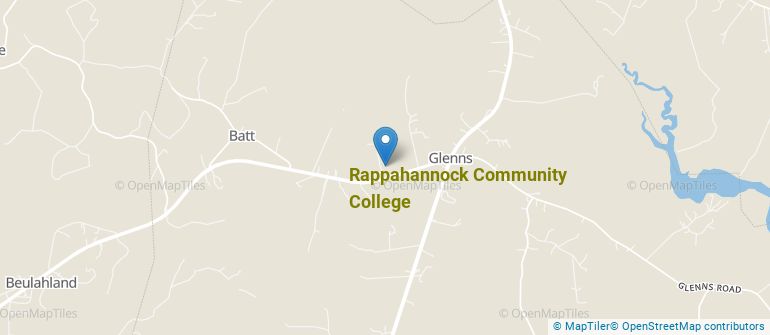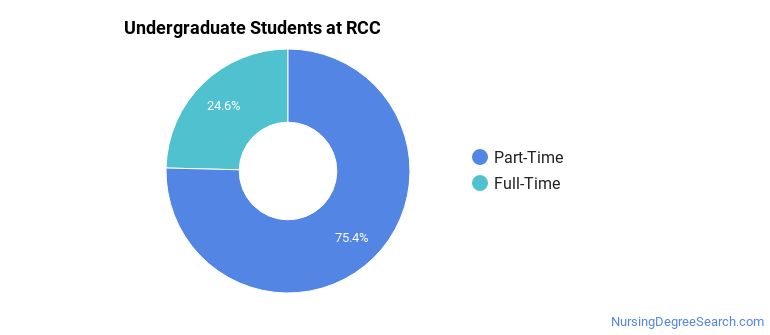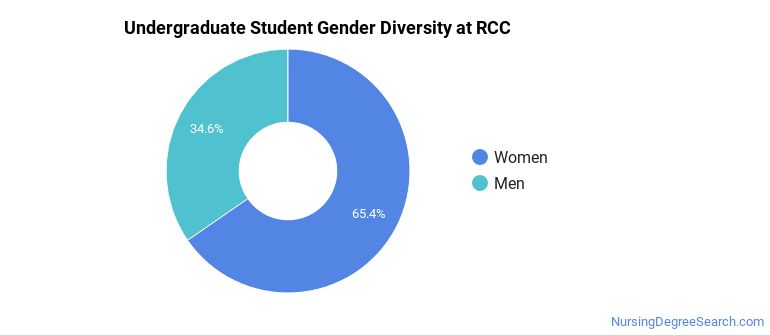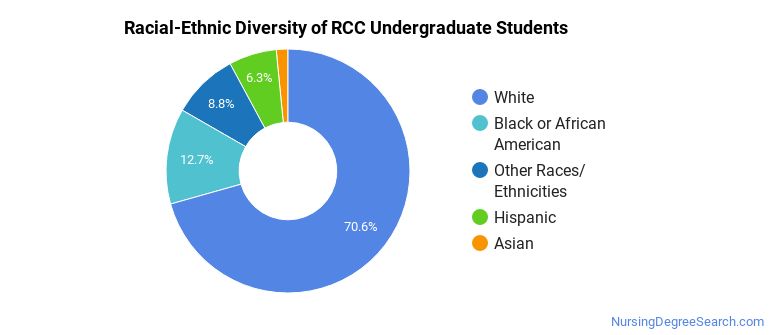Rappahannock Community College Nursing Programs
Rappahannock Community College is a public institution situated in Glenns, Virginia. The rural area surrounding RCC is great for students who love a peaceful atmosphere.
Where Is Rappahannock Community College?

Contact details for RCC are given below.
| Contact Details | |
|---|---|
| Address: | 12745 College Drive, Glenns, VA 23149-2616 |
| Phone: | 804-758-6730 |
| Website: | www.rappahannock.edu |
How Do I Get Into RCC?
You can apply to RCC online at: https://www.rappahannock.edu/sign-up/start-here/index.html
Can I Afford Rappahannock Community College?
Rappahannock Community College Undergraduate Student Diversity

Gender Diversity
Of the 647 full-time undergraduates at RCC, 35% are male and 65% are female.

Racial-Ethnic Diversity
The racial-ethnic breakdown of Rappahannock Community College students is as follows.

| Race/Ethnicity | Number of Grads |
|---|---|
| Asian | 10 |
| Black or African American | 82 |
| Hispanic or Latino | 41 |
| White | 457 |
| International Students | 0 |
| Other Races/Ethnicities | 57 |
Rappahannock Community College Nursing Concentrations
The table below shows the number of awards for each concentration.
| Major | Basic Certificate | Associate’s | Undergraduate Certificate | TOTAL |
|---|---|---|---|---|
| Licensed Practical/Vocational Nurse Training | 82 | 0 | 13 | 95 |
| Registered Nursing | 34 | 47 | 0 | 81 |
| TOTAL | 116 | 47 | 13 | 176 |
References
*The racial-ethnic minorities count is calculated by taking the total number of students and subtracting white students, international students, and students whose race/ethnicity was unknown. This number is then divided by the total number of students at the school to obtain the racial-ethnic minorities percentage.
More about our data sources and methodologies.
